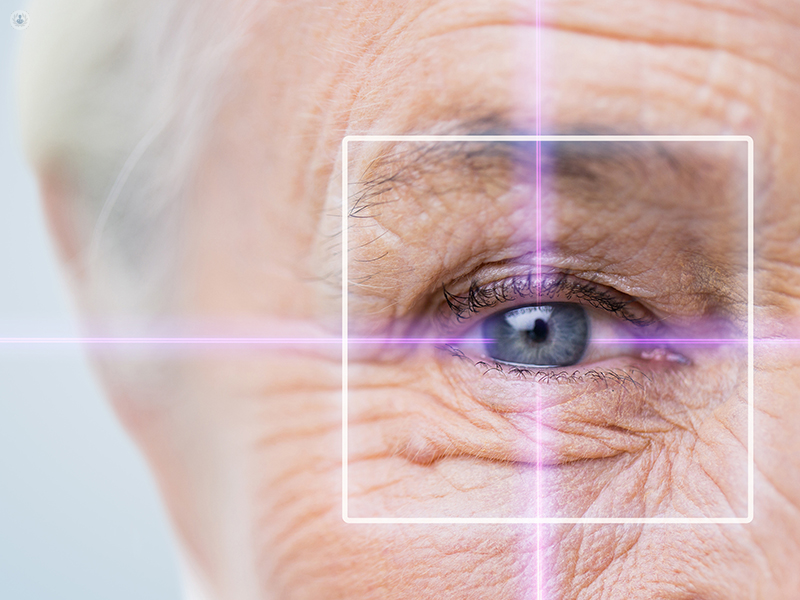LASIK or LASEK surgery? Which is best for me?
Escrito por:Laser eye surgery was introduced in the UK in 1990 and has come a long way since then. It is a type of surgery that helps people rid themselves of glasses or contact lenses. It’s a method of refractive surgery which involves reshaping the cornea (front surface of the eye) in order to correct short-sight, long-sight or astigmatism.

An excimer laser is used to reshape the tissue on the cornea, to the nearest micron, allowing light entering the eye to be focused more accurately onto the retina (back of the eye) where visual information is then sent to the brain.
Dr CT Pillai talks about the most common form of laser eye surgery; LASIK and then LASEK, an alternative option for anyone unsuitable for LASIK surgery.
Why is LASIK so popular?
LASIK is the most common form of laser eye surgery; approximately 90% of patients having laser eye surgery will have LASIK. One of the main reasons for its popularity is the fast recovery, both from a visual and comfort point of view. Most patients need to take a couple of days off work but can return to work very soon after the procedure, if their work is office based. People notice a visual improvement 4-5 hours after LASIK treatment and the discomfort experienced afterwards only lasts for a few hours.
How is LASIK performed?
There are two stages involved in LASIK. In the first stage, the surgeon creates a protective flap on the surface of the cornea (using a precision laser). That flap is then lifted aside.
The second stage involves the excimer laser reshaping the underlying tissue to correct the prescription. The flap is then replaced. There are no stitches required as the tissue is self-adhering. Patients will experience at least 80% of the expected visual outcome the following day – this can vary slightly depending on the level of the visual error.
How is LASEK performed?
LASEK is the laser surgery of choice for patients who are not suitable for LASIK because they have thin corneas or perhaps they play intensive contact sports.
The visual outcome following LASEK is the same as LASIK [i], but the recovery is different. With LASEK, the surgeon applies an alcohol solution which dissolves the surface layer of cells. These cells are shifted to the side and the excimer laser reshapes the cornea. The cells are then shifted back and a bandage contact lens (clear contact lens) is applied to the eye to aid the healing process.
Underneath the bandage contact lens, the cells which were loosened with the alcohol solution slowly heal and regenerate over the next 3 days [ii]. During this time, it can be quite uncomfortable, but over the counter pain relief often helps. By day four, the cells should have healed and the contact lens is removed by the eye care practitioner. Vision will continue to settle over the next 4-6 weeks.
Who can/can not have LASIK?
The suitability criteria for LASIK can only be truly determined by having a consultation with your surgeon, however, there are a few factors which are contraindicated when considering LASIK suitability. These include:
· Pregnancy or breastfeeding
- Severely dry eyes
- Thin corneas
- Keratoconus
- Autoimmune diseases [iii]
- Any severe general health issues
Ocular health is also important as there are some eye conditions (e.g. uncontrolled glaucoma) [iv] which also prevent LASIK from successfully being carried out.
Who can/cannot have LASEK?
LASEK is recommended for those patients who are unable to have LASIK due to having thin corneas or for those who play intensive contact sports. The contraindications in terms of general and ocular health are the same as for LASIK, however, everyone should be assessed on a case by case basis and have a full consultation.
If you would like a consultation to know if you are suitable for LASIK or LASEK laser eye surgery, please visit Dr Pillai’s Top Doctor’s profile.
[i] LASIK vs LASEK vs PRK: advantages and indications. Ambrósio R Jr, Wilson S. Semin Ophthalmol. 2003 Mar; 18(1):2-10. Review.
[ii] LASEK (laser subepithelial keratomileusis). Dastjerdi MH, Soong HK. Curr Opin Ophthalmol. 2002 Aug; 13(4):261-3. Review.
[iii] Refractive Surgery in Systemic and Autoimmune Disease. Majed AlKharashi, Kraig S. Bower, Walter J. Stark, and Yassine J. Daoud. Middle East Afr J Ophthalmol. 2014 Jan-Mar; 21(1): 18–24.
[iv] Update on contraindications for laser-assisted in situ keratomileusis and photorefractive keratectomy. Bower KS, Woreta F. Curr Opin Ophthalmol. 2014 Jul;25(4):251-7


